Off-Grid Adventures: Navigating Power, Water, and Waste Management in Camper Van Conversions

If the nomadic lifestyle is calling, you need a van conversion that can fulfill your need for an off-grid adventure. While not every campsite is dry, plenty are, and you want to be as self-sufficient as possible when on the road.
This guide will explore which power, water, and waste management systems will suit you.
Key Takeaways
- A power system with off-grid capabilities is ideal for camper vans.
- Plumbing and fresh water supply should be as simple as possible.
- Waste management is simplified and more practical with a compact, dry-flush toilet.
Table of Contents:
1 - Power Overview
2 - Water & Heat Overview
3 - Waste Management & Toilet Overview
-
Power Overview
Converted camper vans in Canada and the US typically rely on various power sources to meet their varied needs. For instance, seasoned travellers rely predominantly on one power source but have a different type of backup power system should the primary option fail.
What Types of Power Are There?
Common power types used in camper vans are typically electrical or gas. Here are some examples of popular options:
- Vehicle Battery (12V): The starting battery can power basic systems like lights, water pumps, and fans. However, it's wise to ensure you have a mechanism to prevent the battery from being completely drained, as this could leave you stranded.
- Auxiliary Battery (Deep Cycle): Many campervans have a separate deep-cycle battery or a power bank of these batteries. Deep-cycle batteries are designed to provide a steady, reliable power source over an extended period. Depending on the battery size, they can power appliances, lights, and other camper accessories. They are typically charged using solar panels or an alternator charging system.
- Renewable Power: Solar panels are an excellent way to harness renewable energy to keep your auxiliary batteries charged. They are environmentally friendly and helpful in maintaining power when the vehicle is stationary. Solar and wind-power systems can provide electricity when coupled with batteries and inverters.
- Shore Power: Many campers connect to external power sources at campsites and RV parks. This is called shore power and requires the correct plugs and electrical equipment. Shore power allows you to run appliances and charge batteries without relying on external sources.
- Inverter: An inverter converts DC power from batteries into AC power, allowing you to run appliances that require alternating current. This is useful for charging laptops, running kitchen appliances, or powering entertainment systems.
- Generators: Generators aren't commonly used in camper vans, but you may find some larger rigs have a built-in or portable generator. Generators require fuel to run and are a reliable but noisy power source.
- Propane: Campers commonly use propane for cooking, heating, and running fridges in campervans. Propane is an efficient and clean-burning fuel source but must be refilled periodically.
Your ideal power setup depends on your specific off-grid needs, such as your appliances, camper van size, and how you plan to use it. Many camper van owners opt for a combination of power sources to ensure flexibility and reliability—especially in off-grid camping.
Electric Versus Propane
Let's compare the pros and cons of electric and propane power in the context of camper vans for a better idea of what would best suit your needs:
Electric Pros and Cons
The table below compares the advantages and disadvantages of electric power:
|
Electric Power for Camper Vans |
|
|
Pros |
Cons |
|
|
Propane Pros and Cons
Next, Let's look at the advantages and disadvantages of using propane as a power source in a camper. The table below highlights some of them:
|
Propane Power for Camper Vans |
|
|
Pros |
Cons |
|
|
Camper van owners often opt for a hybrid system incorporating electric and propane systems. This way, they can leverage both systems' advantages and ensure they have power options for various scenarios. For example, they might use propane for cooking and heating and electric power for lighting, charging devices, and running appliances. This is an extremely popular option in Mass-manufactured RVs and less popular in custom Camper vans when power system sizes can be customized to fit your needs.
Generators
Generators are another power option, but they tend to be bulky and noisy, which isn't ideal for enjoying the peaceful outdoors. Additionally, these generators can be very costly and must be serviced periodically. For example, Cummins Onan RV generators can range in price from $4,000 to $14,000. This money could instead be used to install a better power system with off-grid capabilities.
Power Recap
An electric power system with off-grid capabilities is the perfect solution for camper vans. They offer more options regarding recharging and can easily incorporate renewable energy solutions for off-grid camping.
Electric Options
What are your best options for using electric power for your camper van? For simple systems and DIYers, we suggest a compact electrical system like those Ecoflow and Goal Zero offer. Alternatively, you can use a piecemeal electrical solution like Victron for bigger systems and complex conversions. Let's look at them in more detail next:
Compact Electrical Systems
We recommend installing one of two compact electrical systems, either an EcoFlow or Goal Zero. EcoFlow and Goal Zero are well-known companies that produce portable power solutions for camping needs, including mobile power stations and solar panels. They are compared below:
|
EcoFlow |
Goal Zero |
|
|
Pros |
|
|
|
Cons |
|
|
Both EcoFlow and Goal Zero offer high-quality power solutions. Still, you should consider your specific needs, budget, and preferences when choosing between them. It’s recommended to read reviews, compare specifications, and evaluate the product ecosystem to make an informed decision based on individual requirements.
Piecemeal Electrical Systems
A piecemeal system for camper van conversion involves incorporating individual components to create a customized power system that meets your specific needs. Victron Energy is a well-known brand in mobile and off-grid power solutions. They offer various power-related products, including inverters, chargers, solar charge controllers, batteries, and monitoring systems.
When choosing the components of a piecemeal power system, it's wise to consider the following:
- System sizing: Ensure each component is appropriately sized for your energy needs.
- Seamless compatibility: Check that all the components are compatible and communicate seamlessly.
- Installation: Depending on your expertise, you may need professional assistance installing components like inverters and chargers.
Let's take a look at some of Victron Energy's components you might consider for a piecemeal power system in a camper van:
Combining an inverter and charger into a single unit saves space and simplifies installation. Victron Energy inverters often offer pure sine wave output for clean and reliable power. However, some users prefer separate inverters and chargers for greater flexibility and redundancy.
Victron solar charge controllers are efficient and have advanced features that can regulate the charging of batteries from solar panels, thereby maximizing power output.
Victron Energy has various battery options, including lithium-ion and lead-acid batteries. The lithium batteries are lightweight, have a longer lifespan, and can be discharged more deeply.
Victron's battery monitors provide real-time information about your battery bank's status. This allows you to manage power consumption and monitor the health of your batteries.
DC-DC chargers can efficiently charge your van's battery from the vehicle's alternator while driving, offering another top-up option.
Victron's monitoring and control systems provide a central interface for monitoring and controlling your entire power system. It allows you to configure settings, visualize data, and receive alerts.
Lithium Versus AGM Batteries
Lithium-ion (Li-ion) and Absorbent Glass Mat (AGM) are the two more feasible options when choosing batteries for your camper. Your choice will depend on budget, power needs, weight considerations, and how you plan to use your camper van. Each battery type has its pros and cons, which we'll look at next:
|
Lithium-Ion Batteries |
Absorbent Glass Mat Batteries |
|
|
Pros |
|
|
|
Cons |
|
|
2. Water Options Overview
A serious camper van conversion should include a reliable and efficient water system that meets all your needs. To determine which setup is most suitable, consider all the water-related requirements, the climate, and water availability at the destinations you intend to frequent in your camper van.
Initial Considerations
Below are 15 considerations to help you determine your water needs and options for your camper van, bearing in mind that the more straightforward the plumbing, the better:
Recommendations for Water Options
With all the considerations and options available for water systems, deciding which components to choose can be challenging. Think about the following points when considering a water system for your camper van:
- Keep the water system as simple as possible to make it easier to maintain. When it comes to winterizing, you don't only need to keep the cold from damaging your vehicle; you also need to protect your water and waste solutions. The same applies in the heat of the summer.
- Ensure you have access to fresh water anytime throughout the year – this will impact your water storage choice.
- Jerry cans help hold fresh and gray water and can be kept inside to prevent freezing.
- We use tank heater pads for under-mounted water tanks to prevent winter freezing.
- We avoid blackwater systems as much as possible as better options are available.
Our Favourite AIr Heat and Hot water Heater Options For Campervans
We have two favourite options.
Option 1: We love a hydronic air and hot water heater combination system that runs off of a 12v electrical control panel and a coolant loop/reservoir that runs across a heat exchanger to provide you with hot air and hot water! You can also tap into the system to give yourself an engine pre-heater and radiant floor heating, which is excellent for harsh 4-season van conversion use.
Option 2: We love the traditional fuel-run air heater, think Webasto, Espar, or General Components, in combination with an IsoTemp Spa glycol/coolant and electric-powered hot water heater. This system is also excellent and a little more affordable than option 1, but taps right into your vehicle's engine coolant system instead of running off an independent coolant reservoir.
3. Waste Management Overview
Regarding waste management, camper van owners have a large variety of options from which to choose. The choice will depend on the design of your van’s bathroom, your budget, eco-mindedness, and the availability of waste disposal facilities. Some examples of camping toilets include dry flush, composting, buckets, and flushing options. But which ones do we recommend?
Our Personal Favorite: Dry Flush
We recommend installing a dry-flush toilet that works on a principle similar to a Diaper Genie. Dry flush toilets may be a little more expensive, but they are a clean and sanitary option that are worth the investment long-term. They eliminate the need for water and traditional flushing mechanisms. Here's an overview of how they work:
- Design: Dry flush toilets are typically compact and self-contained. They include a seat, a waste collection compartment, and a mechanism for sealing waste in a bag.
- Disposable cartridges: The core of this toilet system is the disposable cartridge or bag. The bag is placed in a waste collection compartment and encapsulates the waste for more straightforward cleaning disposal.
- Sealing mechanism: The unit seals the waste into a disposable bag when the user activates the dry flush mechanism. This helps to isolate the waste and contains the odors while preventing any physical contact.
- Automatic bag change: Some dry flush toilets have an automatic bag changing mechanism. So when the disposable bag is full, the system automatically seals it and advances a new one for subsequent use.
- Battery-powered operation: Dry flush toilets are typically powered by batteries, making them suitable for off-grid camping. The battery is required for the sealing mechanism and other features like a fan for odour control.
Runner Up: Portable Thetford
Thetford is a well-known brand in the camper van industry, and they offer a range of portable toilets suitable for van life needs. One of their most popular options is the Thetford Porta Potti, a compact and portable toilet designed for easy use and convenience in mobile living setups. Below are some of the features of this Porta Potti:
- Portability: The Thetford Porta Potti is designed to be easily portable, making it convenient for camper vans, boats, camping, and other outdoor activities.
- Compact design: Their compact and space-saving design allows them to fit into tight spaces in camper vans. Porta-Potties are often self-contained units with integrated fresh or gray water and waste holding tanks.
- Flush mechanism: Flushing mechanisms vary according to the different Thetford Porta Potti models. For example, some have a manual pump, while others have a battery-powered flush to rinse the bowl after use.
- Waste holding tank: The waste holding tank is a crucial component of a Porta Potti. It is designed for easy removal and waste disposal, and Theta offers a range of tank capacities from which to choose.
- Integrated pour spout: The waste holding tank is typically fitted with an integrated pour spout for easy and mess-free emptying. Some models have an indicator that shows when it's time to empty the tank.
- Sealing mechanisms: Thetford Porta Potti toilets include a sealing mechanism to prevent odours from escaping and securely contain the waste.
- Battery-powered options: Some Thetford flushing toilets are battery-operated for added convenience. These batteries tend to last an extended period, providing reliable flushing.
- User-friendly: Thetford toilets are user-friendly, incorporating simple controls and an easy-to-maintain setup.
- Toilet paper holder: Some Thetford Porta Potti models conveniently include a toilet paper holder.
Other Van Conversion Toilet Options
Dry flush and portable flushing toilets are just some of your waste management options. Below are two other options to consider: the popular composting toilet and less practical flushing toilets:
Composting Toilets
Composting toilets are by far one of the most popular options for the eco-conscious. These eco-friendly toilets require no water and rely on microorganisms to break down human waste. It's like a portable septic tank and has its pros and cons. Here's a brief overview of how they work:
- Separation of solids and liquids: Composting toilets are designed to separate urine from fecal and solid matter. Urine is diverted to help reduce odours while allowing for easier composting.
- Microbial decomposition: Microorganisms (mainly bacteria and fungi) within the composting chamber break the solid waste into compost. This process is facilitated by adding bulking material like coconut coir or peat moss, which helps with aeration and odour control.
- Ventilation system: Composting toilets typically include a small fan to promote airflow and assist with liquid evaporation. This helps maintain the aerobic environment and promotes composting while minimizing odours.
- Maintenance: To ensure even distribution, users must periodically stir or turn the compost. Some composting toilets have a rotating drum or mechanism to make mixing easier.
- Emptying the compost bin: The composted material must be emptied once the composting chamber is full. The resulting compost is typically safe and suitable for disposal in composting or waste facilities.
Pros of Composting Toilets
- Require little to no water
- Eco-friendly
- They might have an odor-control mechanism
- Simple
- Off-grid capabilities
Cons of Composting Toilets
- Expensive
- Compost creation takes a long time
- Messy to clean
- They may require more space than other options
- Requires regular maintenance
Traditional Flush Toilets
Traditional flush toilets, like those found in many residential bathrooms, are not considered ideal for camper vans for several practical reasons. Here's why:
- Water consumption: Traditional flush toilets require significant water for each flush. In a camper van with limited storage capacity, this could quickly deplete your water supply, meaning you must refill more frequently. Frequent refilling can be challenging and inconvenient, especially in remote and off-grid locations.
- Waste management: Traditional toilets generate blackwater and wastewater with human waste. This means the camper van requires a blackwater tank and additional plumbing, potentially more expensive and complex than other alternatives.
- Weight and space constraints: Flush toilets and their associated plumbing requirements typically take up valuable space in a camper van and add considerable weight. Excess weight can lower the van's fuel efficiency and overall performance.
- Installation and maintenance complexity: Flush toilets and plumbing pose a more significant challenge during installation, given all the plumbing fittings. The limited space and hidden plumbing make repairing and maintaining flush toilets more challenging.
Final Thoughts
Converting your cargo van to a camper van requires a lot of consideration and planning. Three major utilities to consider are power, water supply, and waste management. Our favourite options include a power supply with off-grid capabilities, a simple system for water supply, and a dry flush toilet.
While many options exist, we can guide your decision based on your budget, needs, preferences, and your van's capabilities. Then, we sort out the rest, including configuration and installation, so you can get in your converted camper van and explore!


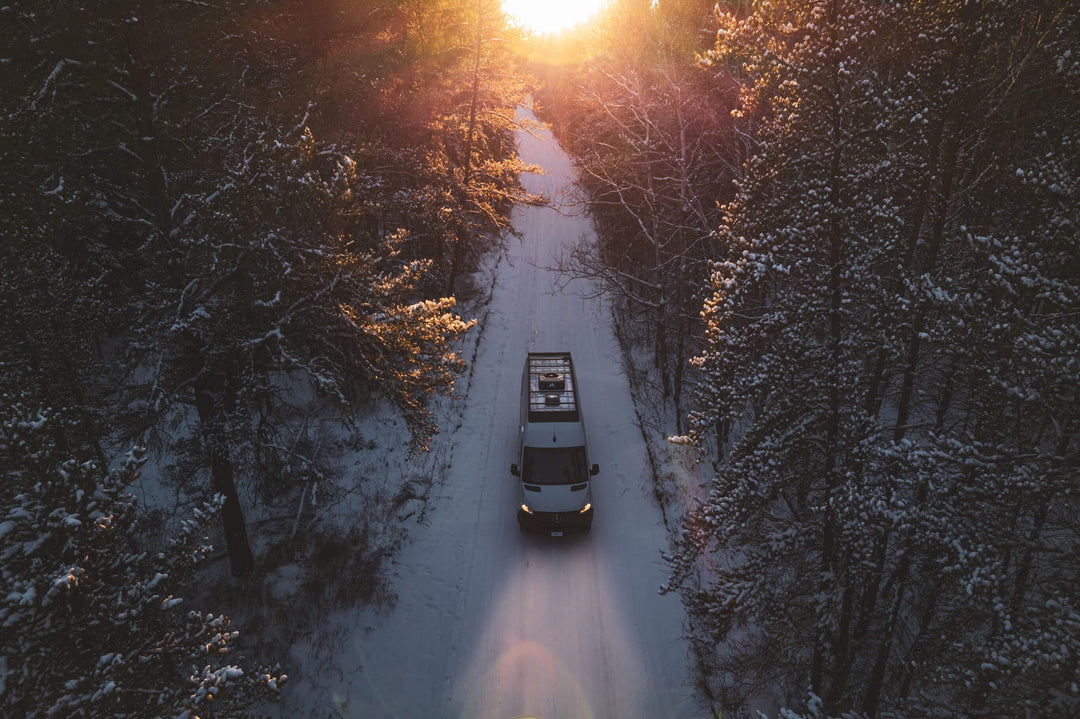
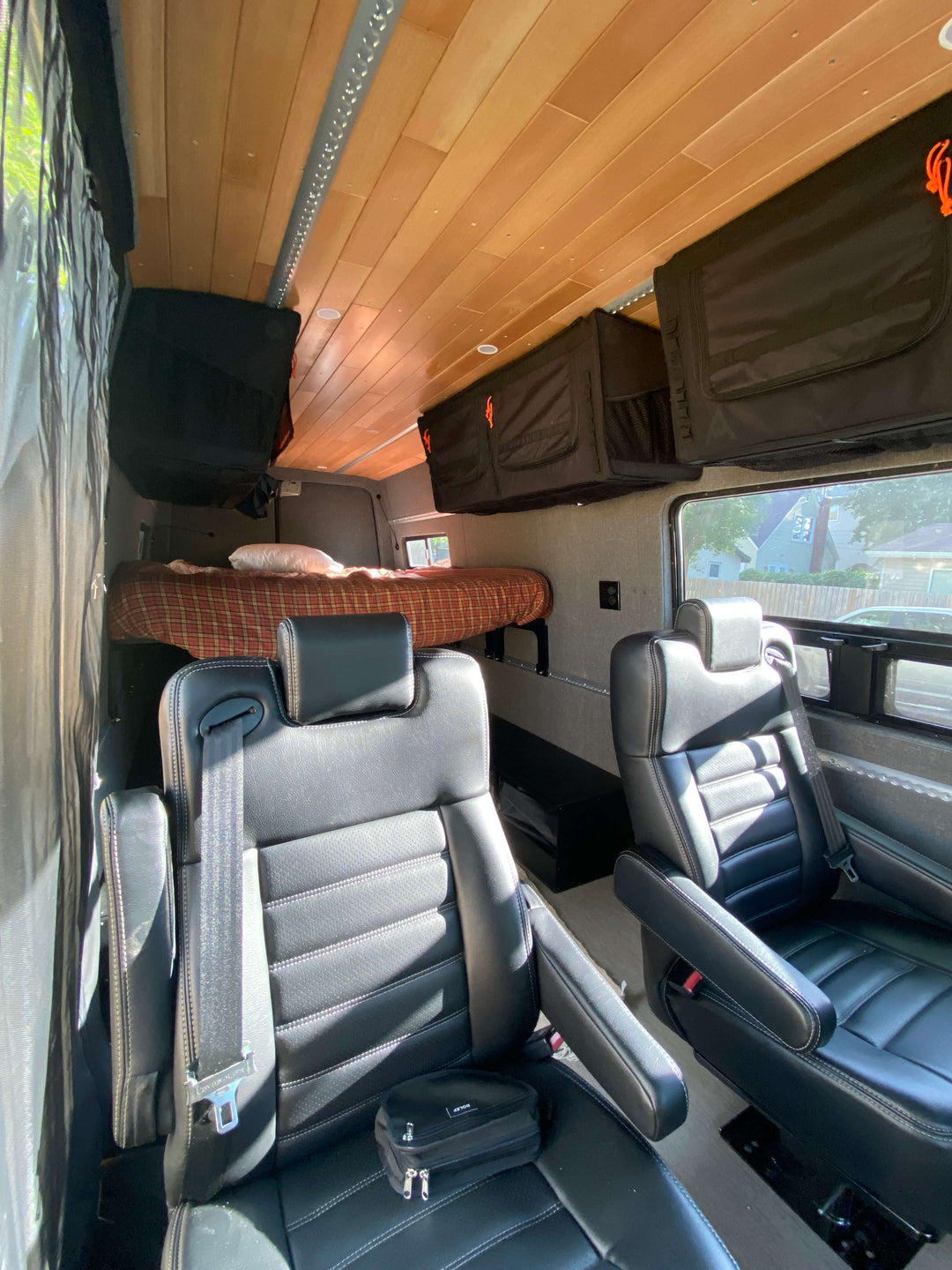
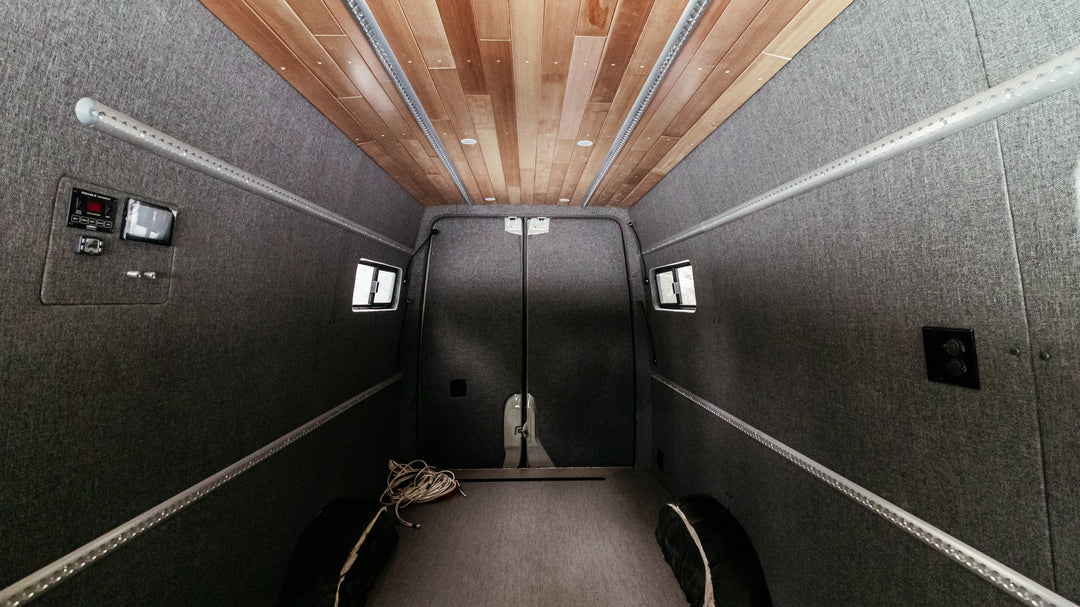
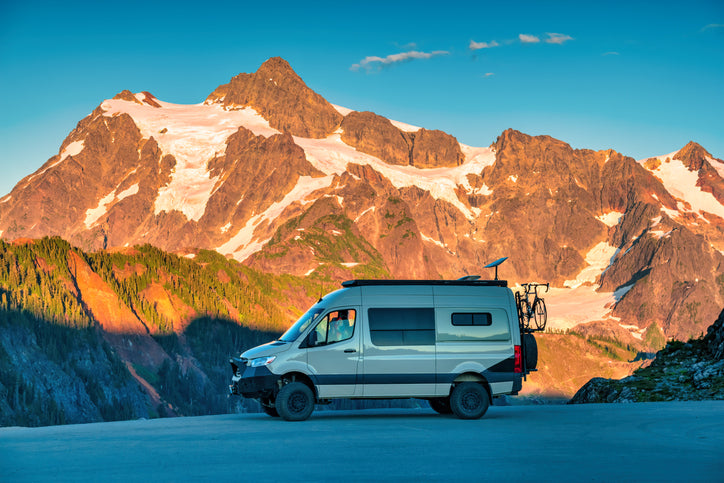
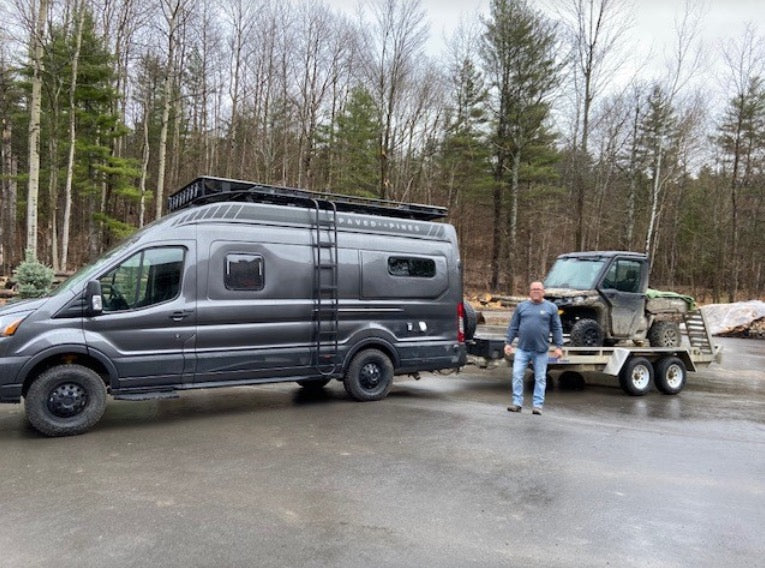

Leave a comment